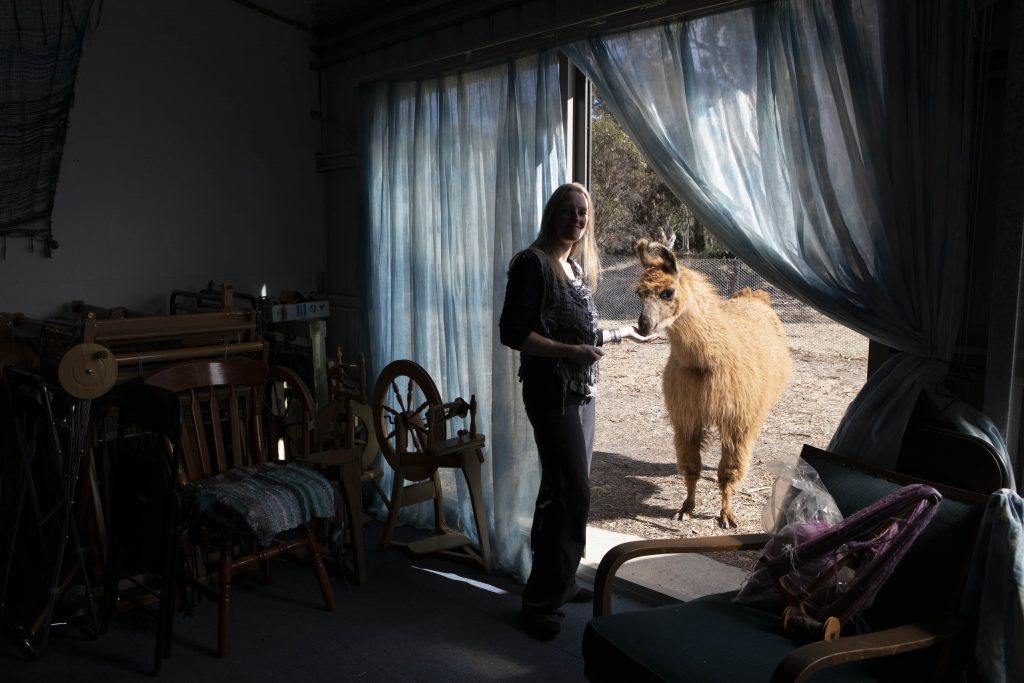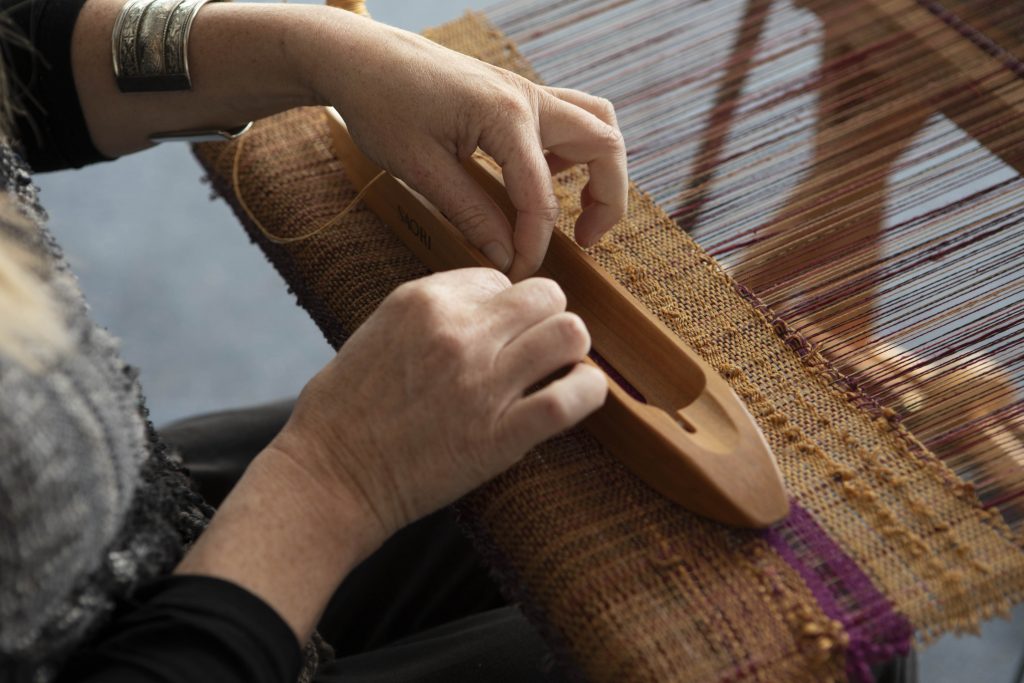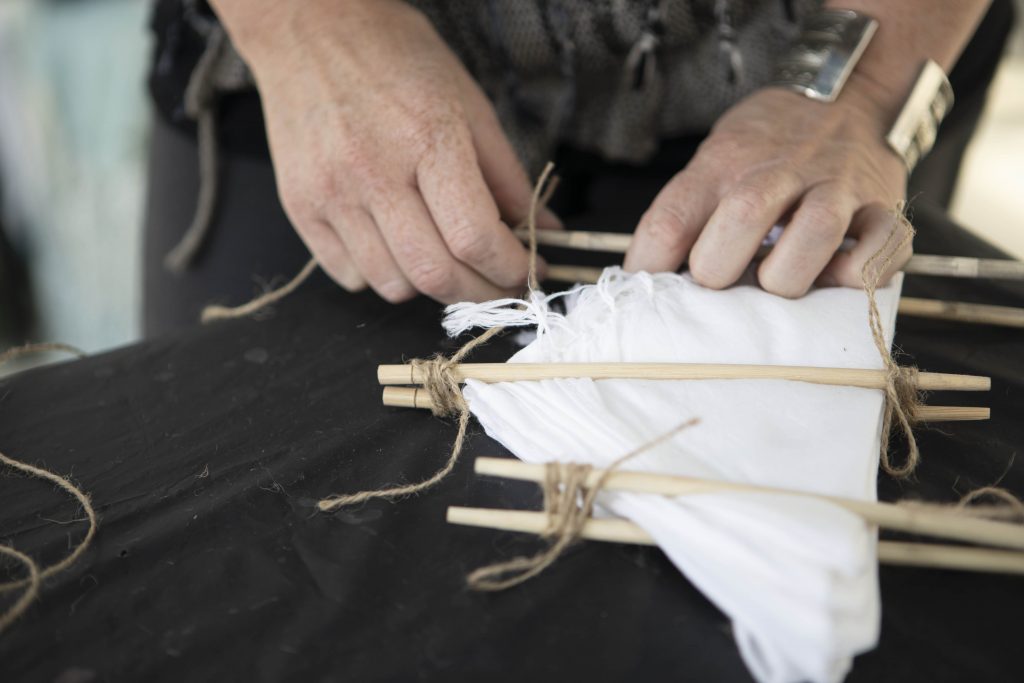Start typing to search
You can also hit “Enter” on your keyboard to submit your query.
0What's on
0Everything Else
From llama farmer to SAORI weaver
Visit Ballarat
18 Feb 2021
Filed underMakers & Growers
It may seem a long way from an old wooden school house, at the centre of a hamlet, in the midst of the Japanese mountains. But it’s much closer than you think. In fact, the land of the rising sun is really just up the road in Clunes at a studio called Dyeing to Weave.
Prue Simmons, a former zoologist, first went to Japan in 2007. She’d studied the language at school and wanted to explore the culture. With this in mind, she joined a volunteer organisation where you offered your free services in exchange for a room and food.

“I’d heard there was a woman living in the Japanese mountains who needed help building a pizza oven and I thought I could do that.” As it turned out, in the middle of nowhere, Prue found an arts and crafts commune, and to thank her for helping with the oven, she was taught how to SAORI weave. From the very first moment, she was hooked.
“SAORI is a very rebellious way of weaving in Japan,” Prue explained. “Traditionally, weaving is a precise, mathematical, pattern-based form of making cloth. You have to concentrate really hard and the looms are quite big. But SAORI weaving is the complete opposite of this.”
“I’m constantly inspired by the landscape around me, by the community around me, by the stillness out here. I don’t think I could do this as well if I was still in Melbourne” – Prue Simmons
Its creator was a woman named Misao Jo, who died only recently at the ripe old age of 104. Misao was a typical Japanese housewife who did calligraphy, tea ceremonies and ikebana flower arranging. “But she always felt constrained,” Prue added. So when she was in her fifties, she went against the grain by creating a freestyle form of weaving, where any errors made along the way just became part of the design.
Misao then asked her engineer son, Kenzo, to create a simpler SAORI loom and using this she created cloth for obi. That’s the name for kimono sashes. At first there were no buyers because of the many mistakes. But, undeterred, she managed to sell them to a shop keeper, who recognised the value in each being an original work.
Of course, there is also a meditative quality to weaving this way. Right from the start, Prue loved that you didn’t have to focus on counting rows and that kind of stuff. Instead, you could just switch off and relax.
In 2011, Prue and her husband left big city life behind and moved to the Ballarat region. “We wanted somewhere that had very fresh air, open spaces, beautiful countryside and that wasn’t far from Melbourne.” As part of this tree change, Prue was also hoping to become one of the few accredited SAORI teachers in Australia which, as it turned out, was no easy feat.
Prue was told she would need to return to Misao Jo’s family in Japan “to live with us, breathe with us, eat with us, and learn with us”. Even then it’s not guaranteed that you would become a teacher after the four weeks. In fact, Prue didn’t find out that she had succeeded until she was packing her bags to leave.

Today, visitors to the Ballarat region can find Dyeing to Weave at the couple’s picturesque White Stone Farm in Clunes. “It is a lovely space, right amongst the landscape” Prue described. “Next to the studio I have a little dam which boasts an endangered species. So as you are weaving you can hear the growling grass frog. And the llamas will often pop their heads in to say ‘hi’.”
The freestyling philosophy of SAORI weaving also extends to the yarn. “You can use whatever you have on hand. You can slice up your old clothes or odd bits of materials and use that in the weaving.” Prue added.
“I had a woman come into one of my workshops and she had tapestry yarns that her mother had left her. She wasn’t sure what to do with them but didn’t want to throw them out. So she asked if she could use them in her SAORI weaving. The result was the most beautiful piece of woven cloth that has since been turned into a vest.” This makes SAORI weaving a sustainable craft as well.
In addition to learning how to weave, visitors can do workshops about dyeing. Prue uses Bengala dyes that are produced by a family in Japan. “They’re derived from the earth, from iron oxide in the soil, so they have these beautiful colours in reds, oranges, browns and greens.” Then there is an indigo dye that has been made by the same company for 200 years. It is often referred to as Samurai Blue and how light or deep it becomes depends on how many times you dip the fabric into the vat.

Students who want to purchase a SAORI loom can order through Prue too. Dyeing to Weave sells all three types. Whichever one you buy, Prue will help you set it up and throws in a day’s tuition to familiarise you with your particular one.
What Prue loves about SAORI weaving is that it’s accessible for anyone. “I’ve had four-year-olds on the loom and 94-year-olds on the loom, as well as everyone in between. People who have never seen a loom before can get on, have literally 10 seconds instruction and they’re weaving cloth.”
